
GUEST BLOGGER AUDREY SAUBLE
Do you think that spiders are big, hairy, and horribly scary? Or maybe spiders are fine, but you just don’t like the way when they run out at you suddenly from under a bucket or a log?
Or maybe you think they are fascinating!
Whatever you may think of spiders, there is more to them than eight hairy legs. That makes them a perfect teaching tool to explain scientific classification to students.
In Can a Spider Be Fluffy?, I show fifteen different spiders—as well as one extra arachnid that isn’t a spider.
Tarantulas vs. wolf spiders
One of these fifteen spiders is a wolf spider and two of them are tarantulas. In the notes at the back of the book, I explain that the name tarantula came from an Italian wolf spider (Lycosa tarantula in the family Lycosidae). Early explorers gave this name “Tarantula” to many of the large, hairy spiders they found in the new world, but tarantulas in the Americas belong to the family Theraphosidae, not the wolf spider family Lycosidae.
Why all these long Latin names?
As you can see from the tarantulas and the tarantula wolf spider, common names can easily get mixed up—especially when those names vary across different languages and regions.
Can a Spider Be Fluffy? focuses on textures like shiny and fluffy, but it also shows how different spiders can be from each other. You can use its illustrations to encourage students to study each spider’s characteristics and explore how scientists might use these characteristics to classify different species of spiders.
Activity 1: Details & observations
For kindergarten and early elementary students, you might focus on observing details and how they help to distinguish different species of spiders.
Start by reading the story aloud.
Then, share the scientific names chart from the back of the book. (There is a printable version here.) After students have examined the silhouettes on the chart, you can go through the illustrations again, matching up the silhouettes with the spiders from the illustrations.
As the students look through the book a second time, ask them what they notice about the spiders. What traits do all the spiders share? What traits are unique to a specific species?
Shared traits:
- Two body segments (head/cephalothorax, and abdomen)
- Eight legs
- Jointed legs with seven segments
- Two pedipalps or feelers
- Two fangs or chelicera
- Spinnerets
Specialized traits:
- Fuzzy or smooth texture
- Patterns of stripes or spots
- Color
- Size
- Relative length of leg segments
- Abdomen shape
- Number of eyes
- Type of web
For younger students, it may be enough to point out these different traits and explain that scientists use them to group the spiders into families. The spider’s scientific names show what group they belong too, while also giving scientists a unique name for each species.
For older students, you can use the next activity to explore scientific names in more depth.
Activity 2: Names & classifications
After students have identified some of the different spiders’ traits in the first activity, explain that scientists use all these traits and many others to identify different species of spiders. When spiders share certain traits, scientists may group them into families.
If two species in a family share many similar traits, scientists may add them to a smaller group within the family, called a genus. This genus becomes part of the spiders’ scientific name, so spiders in the same genus share part of their name.
For example, on the name chart, you may notice the names Araneus cavaticus and Araneus diadematus. These are the scientific names for a cross spider (or cross orb weaver) and a barn spider. Both spiders belong to the genus Araneus, within the larger family of orb weavers.
At this point, ask the students if they can identify any of the other orb weavers in the book (yellow garden spider, cross spider, barn spider, spiny orb weaver, and bolas spider).
Extension activities
If you want, you can ask each student to research a spider. Or you can use the cards included in the PDF above to check each spider’s genus and family. Students can use this information to draw a chart showing how the spiders’ family tree.
What other spider families or groups can students identify based on the spiders’ scientific names and their observations? What other information would students need to identify and classify these spiders? How could they use this information to discuss these spiders?
Audrey Sauble is a children’s author and illustrator who is obsessed with slugs, bugs, and trees—along with all kinds of other green things and creepy-crawlies. So far, she has published four picture books and two science-themed coloring books. However, drawing, photographing, and writing about spiders is one of her favorite projects. Can a Spider be Fluffy? is the second book in her Early Nature Series.
Find more book-themed activities on Audrey’s blog, www.aesauble.com, or follow her on social media:
Facebook: https://www.facebook.com/aesauble
Instagram: https://www.instagram.com/audreysaublekidsbooks/
Pinterest: https://www.pinterest.com/aesauble


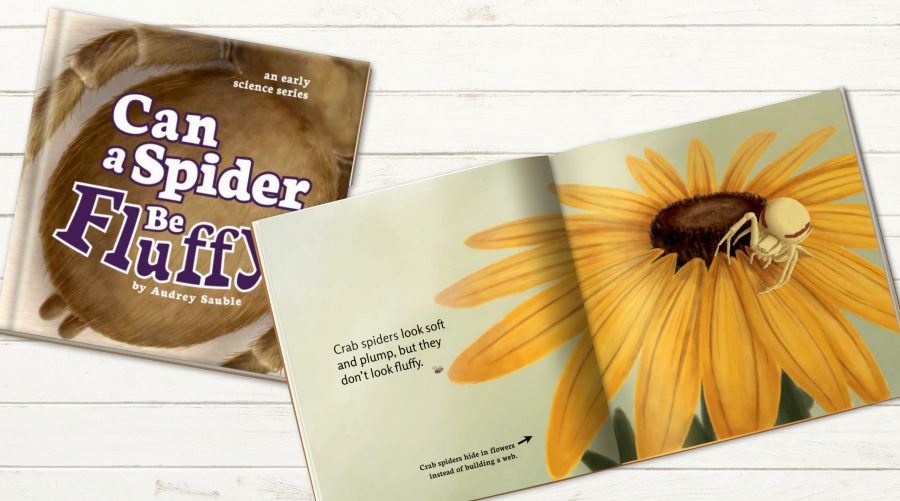
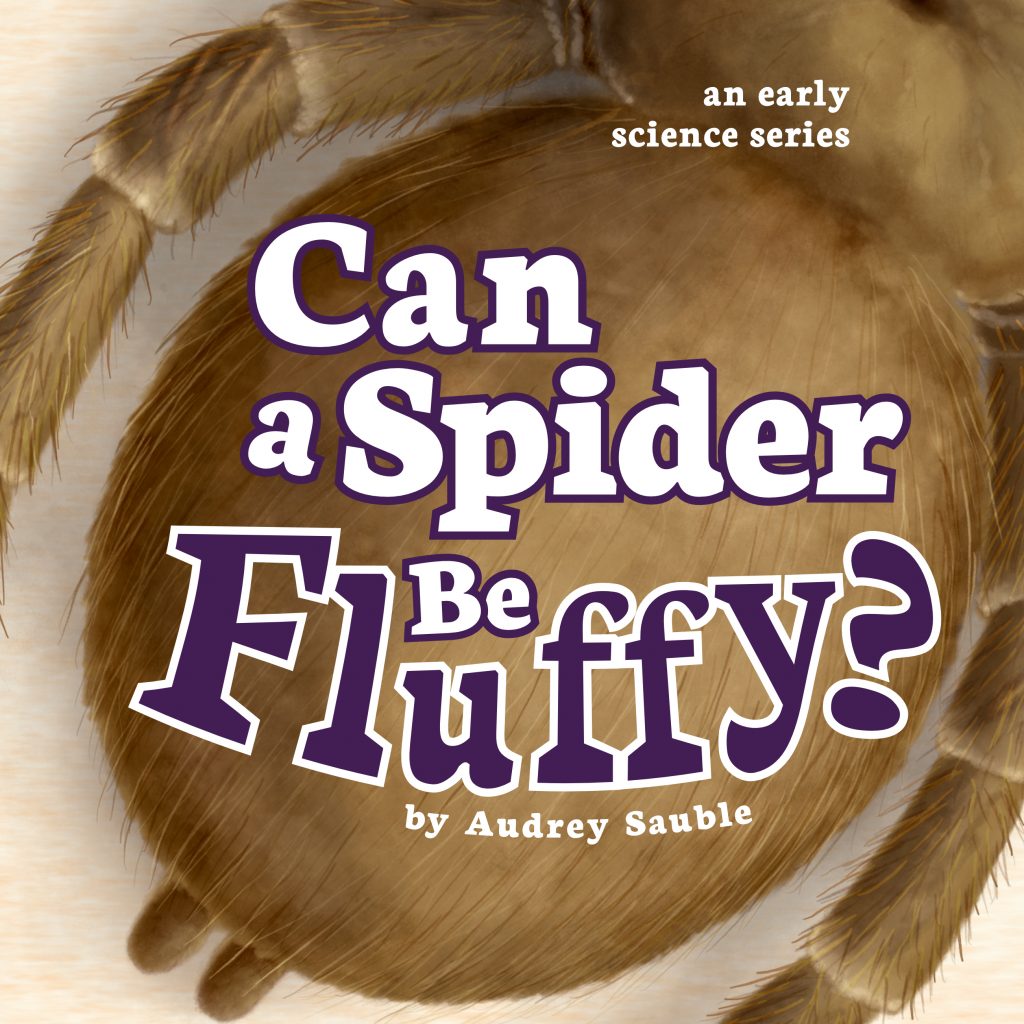
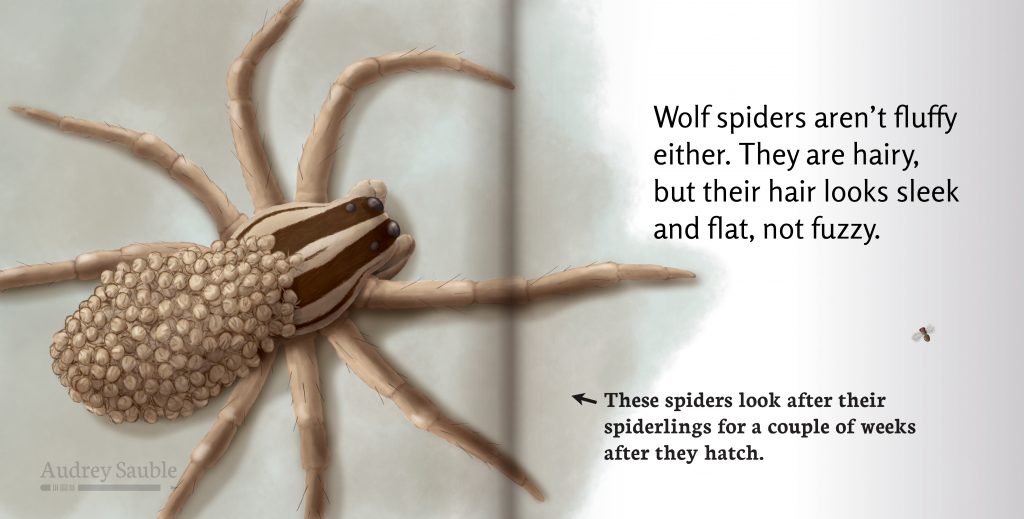
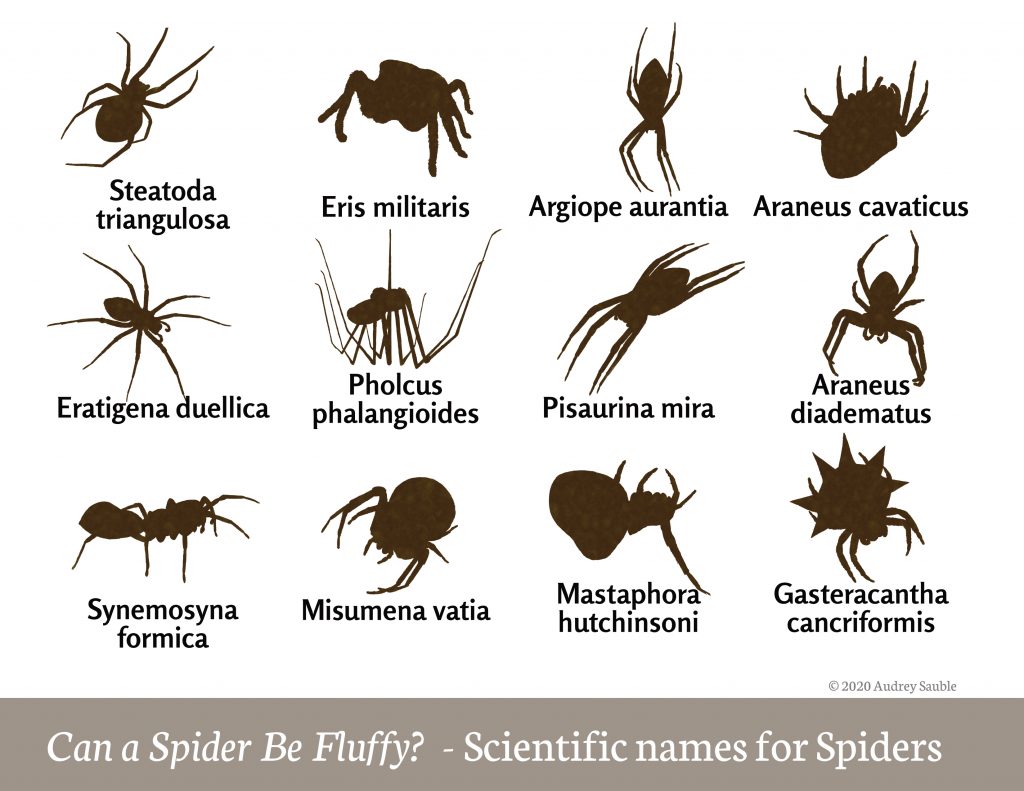

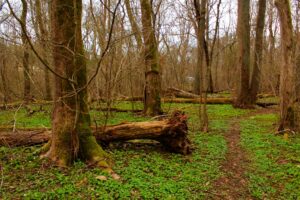

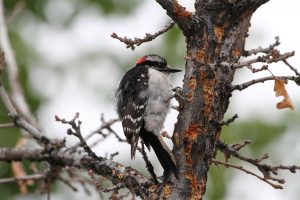


Leave a Reply
Your email is safe with me.